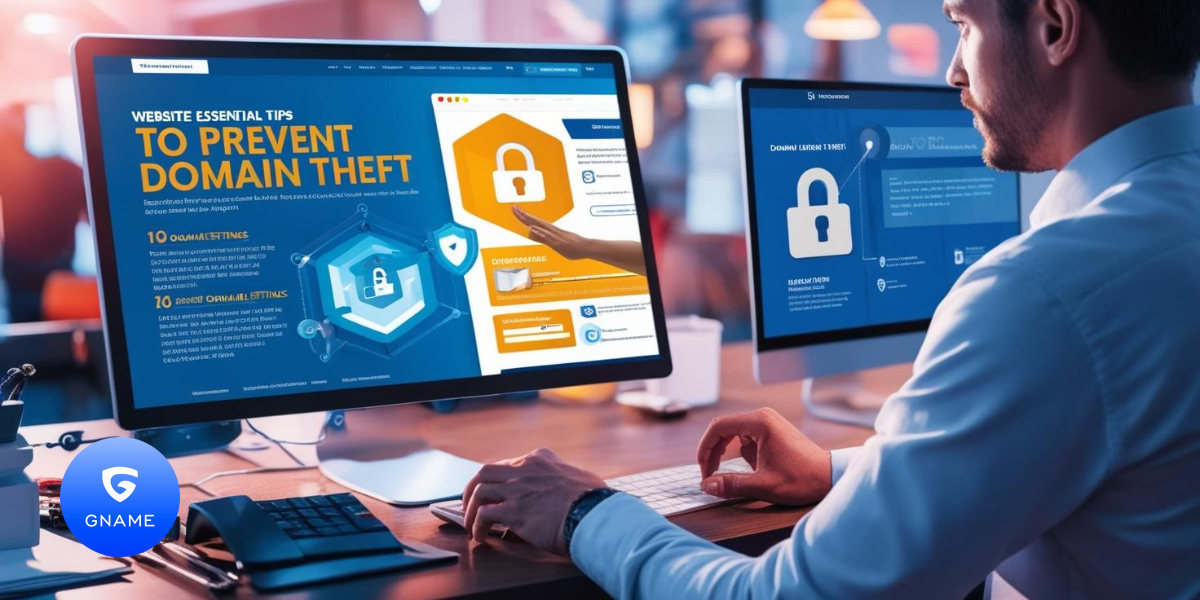Imagine waking up one day to find your website gone—your domain stolen, your business offline, and your reputation on the line. Domain theft isn’t just a technical hiccup—it’s a serious threat to your brand’s identity. But with the right precautions, it’s also highly preventable.
Here’s what every website owner should know to keep their domain safe.

What Is Domain Theft, and How Does It Happen?
Domain theft (also called domain hijacking) happens when someone illegally gains access to your domain and transfers it to another account or registrar—often without you noticing until it’s too late. This usually stems from weak security, phishing attacks, or outdated contact info. The more you understand how it works, the better you can protect yourself.
1. Use Strong, Unique Passwords
It sounds simple, but strong passwords are your first line of defense. Avoid using the same password across multiple accounts, and ditch anything that includes your birthday, pet’s name, or “123456.” Go for a mix of uppercase and lowercase letters, numbers, and symbols. If that feels overwhelming, use a password manager to generate and store complex passwords securely.
2. Turn On Two-Factor Authentication (2FA)
Think of 2FA as a security double-check. Even if someone steals your password, they can’t log in without a second form of verification—usually a code sent to your phone or generated by an app like Google Authenticator. Most major registrars support 2FA, and it only takes a few minutes to set up.
3. Keep Your Contact Details Current
Your registrar needs a working email and phone number to notify you of important updates—like suspicious login attempts or domain changes. If your contact info is outdated, you could miss crucial alerts. Make it a habit to double-check your contact details every few months.
4. Monitor Your Domain Activity
It’s easy to register a domain and forget about it. But staying on top of your domain’s status is key. Log into your registrar account regularly to check for changes, verify ownership details, and confirm your renewal date. Better yet, enable auto-renew to avoid accidental lapses. Some registrars even offer alert systems to flag unusual activity.
5. Use Domain Locking
Most registrars offer domain or registrar locking—a simple but powerful feature that stops unauthorized transfers. Unless you’re intentionally moving your domain, it should stay locked at all times. It’s one of the easiest ways to prevent hijacking.
6. Stay Sharp Against Phishing Scams
Phishing is still one of the top ways hackers gain access to domain accounts. Be cautious with emails that ask for login credentials or personal info. Double-check email addresses, avoid clicking suspicious links, and never download attachments from unknown sources. When in doubt, type your registrar’s web address directly into your browser rather than clicking through emails.
Final Thoughts: Don’t Wait Until It’s Too Late
Your domain is more than just a URL—it’s your digital storefront, your brand, your identity. Protecting it isn’t a one-time task; it’s an ongoing responsibility.
Taking simple steps—like using stronger passwords, enabling 2FA, staying alert for phishing attempts, and locking your domain—can save you from the nightmare of domain theft. Think of it as locking the doors to your business each night. It’s small effort now, for big peace of mind later.




















